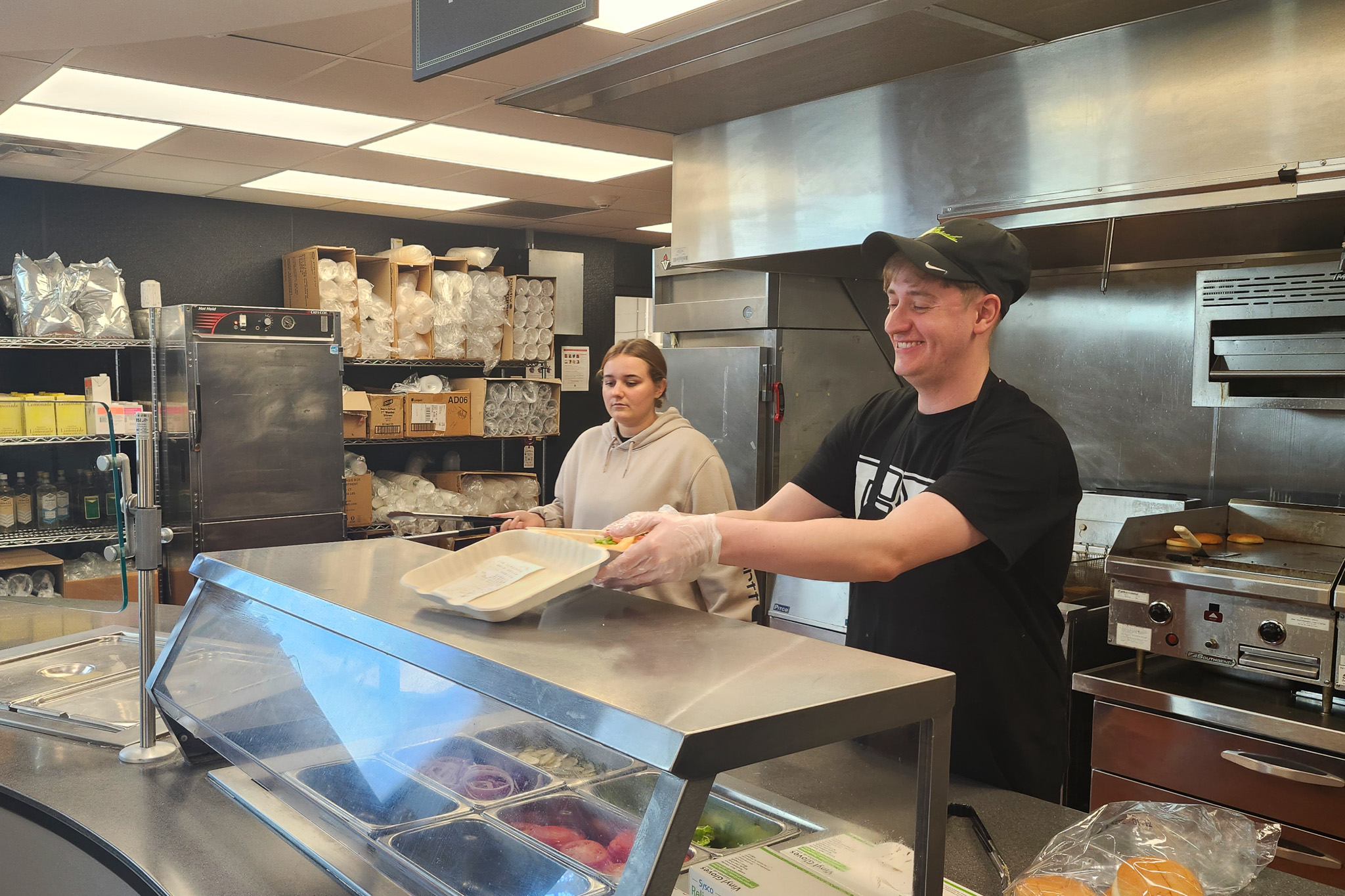With West Lawn dining reopened, the Leaf Raker has been able to return to its intended duties.
Ben Bontrager, vice president of finance and operations, explained, “The Leaf Raker offered a nice complement to Westlawn dining with great sandwich options off the grill, smoked meats prepared in-house by our own Jeremy Corson, and an assortment of other ‘comfort’ foods prepared to order.”He also shared that it is a good quick service option as students are able to place orders and take their food to go. Additionally, the Leaf Raker serves coffee, Bontrager shared. “The Leaf Raker was also a regular stop for students in the morning to get their caffeine fill up serving popular Starbucks drinks.” Various caffeinated beverages are back, with the drink menu being posted on screens over the order station.
Lucas Cardoso, an employee at the Leaf Raker, said, “We can offer meal replacements here as well as munch money.”
Another job that the Leaf Raker has been able to resume with dining moving back to West Lawn is displaying the Haitian art collection donated by Arlin and Naomi Hunsberger in 2019. The collection was stored right in the building, according to Sara Method, assistant professor of art, who said, “We do have art storage, it is in the Union. We have a space, it’s a locked space, and it’s a conditioned space. That’s where things that aren’t on display, and it’s not just the Haitian collection.”
Throughout the Hunsbergers’ time in Haiti they were able to amass a large collection of art. Veronica Berkey, administrative assistant for art and social work, said, “There are 88 pieces in the collection. 40-some of them are in storage. Although we put some in the case that’s there in the Fraker sometimes so it’s somewhat less than 40.” Pieces include art that can be hung on the walls as well as sculptural art.
Both Berkey and Method shared that what art was on display was influenced by the amount of space they had as well as the condition the piece was in. “A lot of it had to do with the integrity of the frames and whether the hardware could be attached or not,” stated Berkey.
Method said that the collection is able to show a variety of aspects of life in Haiti which is helped by the fact that the collection showcases many different artists. She continued, “I just like there’s a variety of artists so it’s more interesting to me than seeing all one artist up all the time. And kind of getting different perspectives in their styles and what they’re drawn to.”
Different people have different ways of seeing the world, this is shown through different art styles across cultures. Berkey reminds people that Haitian art, like most art from other cultures, is not a monolith, saying, “People maybe think of this super primitive looking art when they think of Haitian art, but then you’ve got this super detailed realistic, but not necessarily perspective [art].”


